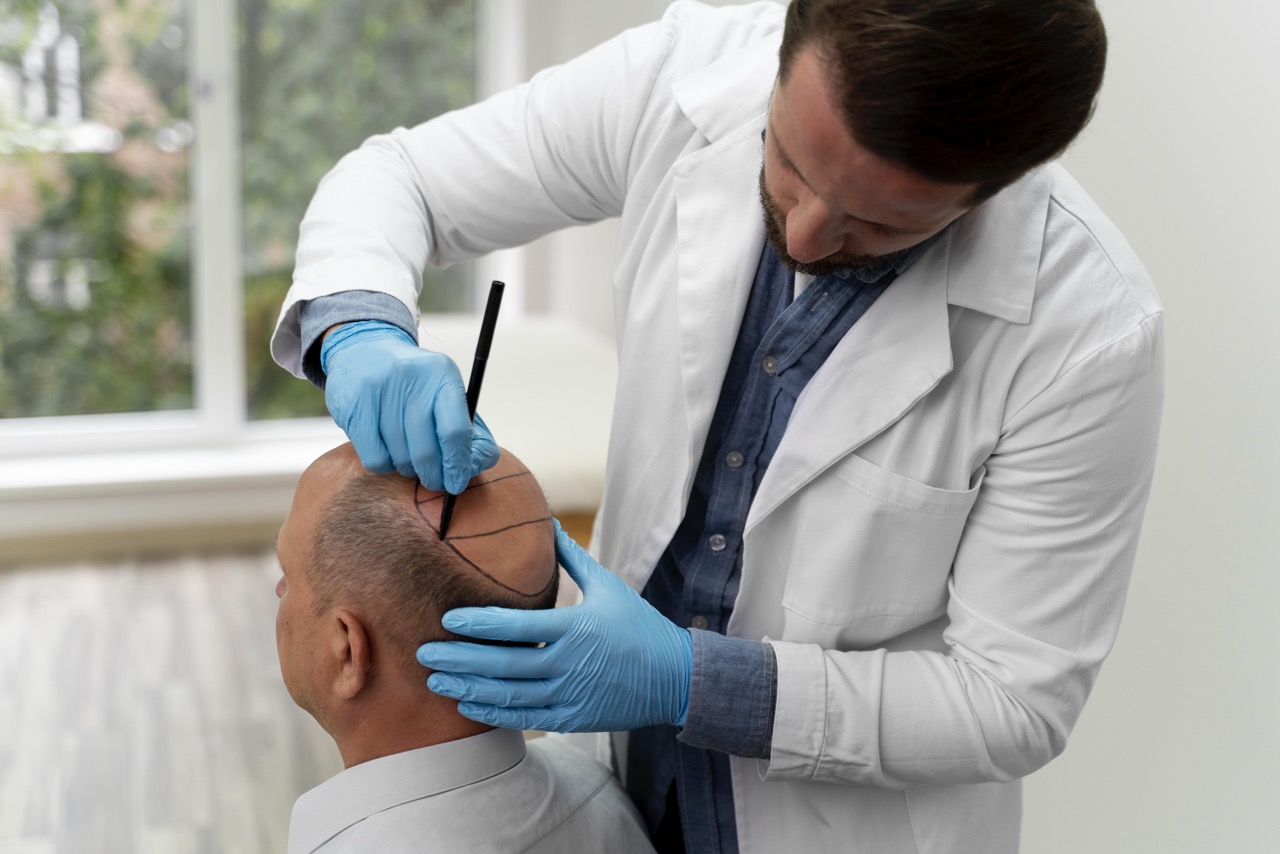Can Women Get Hair Transplants? Female Hair Loss Solutions
Hair loss is often thought of as a male concern, but the truth is that many women experience thinning hair or pattern baldness at some point in their lives. This can be a deeply distressing issue, impacting confidence and self-esteem. Fortunately, hair transplantation is not just for men—women can also benefit from advanced hair restoration techniques. Here, we’ll explore the causes of female hair loss, the treatments available, and whether a hair transplant might be the right solution for you.
What Causes Hair Loss in Women?
Unlike men, who typically experience hairline recession or balding at the crown, women often face more diffuse thinning. Common causes include:
Androgenetic Alopecia (Female Pattern Hair Loss):
- This is the most common cause of hair loss in women and is usually inherited. It leads to thinning at the part line, gradually spreading to other areas.
Hormonal Changes:
- Events such as pregnancy, menopause, or thyroid issues can disrupt the hair growth cycle, causing temporary or long-term thinning.
Nutritional Deficiencies:
- A lack of essential vitamins and minerals—such as iron, zinc, or vitamin D—can weaken hair follicles and lead to shedding.
Stress and Trauma:
- High levels of stress or significant physical trauma can cause telogen effluvium, a condition where hair shifts prematurely into the shedding phase.
Medical Conditions and Medications:
- Autoimmune diseases, certain prescription drugs, and scalp conditions like alopecia areata or lichen planopilaris can all contribute to hair loss.
Understanding the underlying cause of hair loss is critical in determining the most effective treatment plan. Consulting a dermatologist or hair restoration specialist is the first step toward diagnosing the issue and exploring your options.
Hair Transplantation for Women: Is It Possible?
The short answer is yes—women can absolutely get hair transplants. In fact, many women around the world have successfully undergone this procedure to restore thickness, density, and natural hairlines. While hair restoration methods have traditionally been more commonly associated with men, advancements in technology and technique have made it possible for women to achieve exceptional results as well.
How Does a Hair Transplant Work for Women?
Hair transplant procedures for women typically involve harvesting healthy hair follicles from the back or sides of the scalp (areas resistant to thinning) and transplanting them into areas of thinning or balding. The two most popular techniques are:
Follicular Unit Extraction (FUE):
- In this method, individual hair follicles are removed using a tiny punch tool and then transplanted into the recipient area. FUE is minimally invasive, leaves no linear scar, and has a relatively quick recovery time. This approach is often preferred for female patients as it allows for more precise placement of grafts in thinning zones.
Follicular Unit Transplantation (FUT):
- Also known as the strip method, FUT involves removing a thin strip of scalp from the donor area, dissecting it into individual grafts, and transplanting them into the thinning areas. While this method can yield a high number of grafts in one session, it leaves a linear scar and requires a slightly longer recovery period.
Are Women Good Candidates for Hair Transplants?
Not all women experiencing hair loss are suitable candidates for transplantation. A thorough evaluation is needed to determine whether the procedure is appropriate. The best candidates are typically women who:
- Have a well-defined area of hair loss, such as thinning at the hairline, temples, or crown.
- Have sufficient donor hair in the back or sides of the scalp.
- Are in good overall health and free of scalp conditions that could compromise graft survival.
- Have realistic expectations and understand that the transplant will improve density, not create the hair thickness of their youth.
Women with widespread, diffuse thinning may not achieve the desired results from a transplant alone. In such cases, combining surgery with other treatments might be more effective.
Additional Female Hair Loss Solutions
While hair transplantation can be life-changing, it’s not the only option available. Many women benefit from a combination of surgical and non-surgical treatments, including:
Medications:Minoxidil:
- The only FDA-approved topical treatment for female pattern hair loss. Applied directly to the scalp, minoxidil can help slow thinning and encourage regrowth.
Spironolactone:
- An oral medication that may help block the effects of androgens on hair follicles, reducing shedding.
Platelet-Rich Plasma (PRP) Therapy:
- PRP involves drawing a small amount of your blood, processing it to concentrate platelets and growth factors, and injecting it into the scalp. PRP has shown promise in stimulating hair follicles and improving hair density when used in conjunction with a transplant or on its own.
Low-Level Laser Therapy (LLLT):
- LLLT uses laser devices or caps to stimulate hair follicles, improve scalp circulation, and promote thicker hair over time. It’s a non-invasive option that can be used at home or in a clinic setting.
Nutritional and Lifestyle Adjustments:
- Improving your diet, reducing stress, and addressing any underlying deficiencies can create a healthier environment for hair growth.
What to Expect During a Hair Transplant for Women
If you’re considering a hair transplant, here’s a general overview of the process:
Consultation and Evaluation:
- Your surgeon will assess your hair loss pattern, donor hair quality, and overall health to determine if you’re a good candidate. A personalized treatment plan will be developed based on your goals and hair characteristics.
Procedure Day:
- The procedure is usually done under local anesthesia. The surgeon will extract hair follicles from the donor area and implant them into the thinning areas. The length of the procedure depends on the number of grafts being transplanted but typically ranges from several hours to a full day.
Recovery and Results:
- Recovery is usually quick, with most women returning to their normal routine within a few days. Transplanted hairs will shed initially, which is normal, and new growth will begin after a few months. Full results are typically seen within 9–12 months, revealing thicker, more natural-looking hair.
Why Women Choose Turkey for Hair Transplants
Turkey has become a leading destination for hair transplants, including those for women. Key reasons include:
Highly Experienced Surgeons:
- Many Turkish clinics have specialists who are skilled in both male and female hair restoration procedures.
Advanced Techniques:
- State-of-the-art technology ensures precise graft placement and natural results.
Affordable Prices:
- Turkey offers competitive pricing compared to Europe or the US, making it accessible for more patients.
Comprehensive Care Packages:
- Many clinics provide all-inclusive packages covering consultations, transportation, accommodation, and aftercare, making the experience seamless for international patients.
Final Thoughts
Yes, women can absolutely get hair transplants, and the results can be transformative. Whether you’re dealing with thinning at the temples, a receding hairline, or patchy areas, modern surgical techniques can help you regain the fuller, more even hair you desire. By consulting with an experienced specialist, exploring the best treatment options, and choosing a reputable clinic—such as those in Istanbul, Antalya, Izmir, or Kuşadası—you’ll be well on your way to restoring your confidence and enjoying the benefits of thicker, healthier hair.
 English
English














